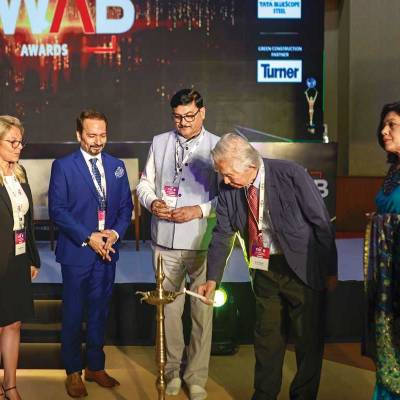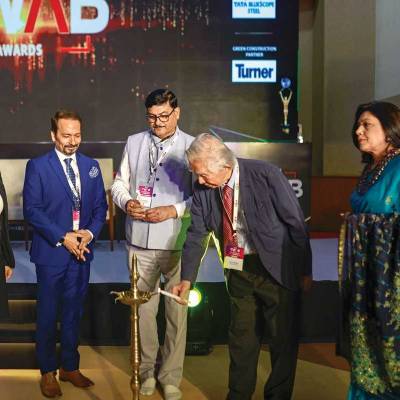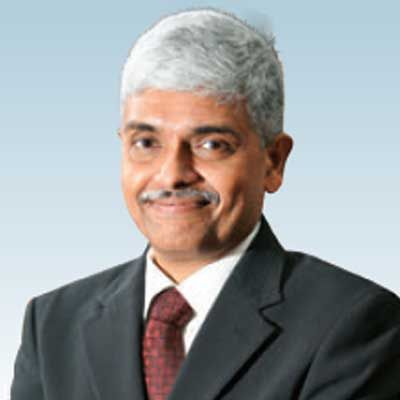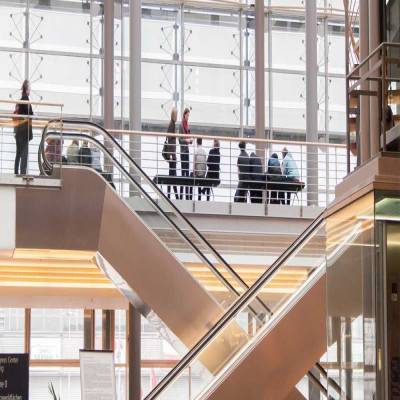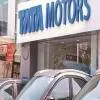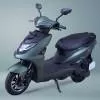- Home
- Real Estate
- We have the largest service portfolio, with about 70,000-odd units

We have the largest service portfolio, with about 70,000-odd units
Otis is among the world's leading manufacturer and maintainer of people movers, offering products - elevators, escalators and moving walkways - in over 200 countries and territories. In fact, it installed its first elevator in India 125 years ago, which is still operational! Sebi Joseph, President, Otis India, shares more about the company and its plans and prospects in conversation with SHRIYAL SETHUMADHAVAN.
Tell us about the elevator that was installed 125 years ago.
The elevator was installed in Kolkata in 1892, and modernised, while retaining its look, in the 1960s or 70s. Today, it's still under use. So the brand comes with a lot of heritage, yet it is contemporary. As an entity, we have been in existence for 62-odd years with the largest service portfolio in the country and around 70,000-odd units. We are the first elevator company to start manufacturing in the country. We moved to Bengaluru in 1995. We expanded the factory four years ago, and now, it is the largest elevator factory in the country with a capacity of 10,000 units spread across 28,000 sq m. This apart, we introduced a product in Europe in 2000 called Gen2. When we introduced it in Bengaluru, it was a 1-m-per-second elevator, and now we are soon going to have a 2.5 m-per-second to cater to the needs of people in India. Also, we are opening an escalator facility in Bengaluru, considering the growing market.
Tell us about the technology used to make your products energy-efficient.
When an elevator is breaking the energy, it is normally dissipated back into the system, which will improve energy efficiency by 65-70 per cent. It's a great product that is witnessing roaring business over the last two to three years.
We wanted to be ahead of time, ahead of the competition, to help and contribute to the public and consumer at large by offering a sustainable solution. In fact, when we introduced Gen2 in 2011, we were way ahead, but the market was not ready to embrace it. People were talking green but not acting green. Now after three years, much water has flowed under the bridge and a lot of change is seen. That is why we got a tremendous response for this product.
How is this priced compared to your other products as this is intended for affordable housing?
It is very compelling and, hence, very attractive. Despite demonetisation, GST, RERA, whatever, you see 6-8 per cent growth of the industry overall. We are living in exciting times and in an exciting country. With GST and RERA coming in, people will take it slow.
If you look at RERA, some big real-estate players may exit but different equations and formulas will form. Emerging players may join the big players in consolidation; it has already started happening.
How do you see the market for escalators growing?
We are seeing a growth of 7-8 per cent, which is reasonably good. The residential segment, especially affordable housing, will drive this growth. There will definitely be growth in infrastructure; the market this year is expected to be around 49,000 units.
Are there any specific products that we can see Otis launching?
Otis has never shied away from introducing products for the Indian market. That's why, as I said, we started manufacturing in the 1970s, much ahead of players in the industry. We introduced Gen2, again a green product much ahead of others. So, we will continue to come out with products for the affordable housing segment. For that matter, we will have timely launch of products for all segments. For escalators, we do not have that kind of scale in the country, but it will happen eventually. Speaking of smart cities, smart stands for energy-efficiency and we have Gen2, our best product across the globe.
Apart from the installation market, you also have the maintenance market that is growing...
As I mentioned, we have the largest service portfolio, with about 70,000-odd units. This is our biggest strength, not only here but across the globe. Service is the key differentiator between us and our competitors. We invest a lot in services like training mechanics. And now, we are in the digitisation phase. One aspect is the destination dispatch system. Another is remotely attending to a breakdown. The bottom line or objective is to have maximum uptime for the elevator.
In India, we have tied with Microsoft, Apple, etc. Interestingly, nearly 45 per cent of the company's revenue comes from service.
So, Otis has continued to excel for 160-odd years mainly because of three factors: Safety, service and innovation.
What emphasis does Otis lay on R&D?
We have an engineering setup in Bengaluru, which we are growing. Although we develop all our products outside, we Indianise them with the efforts of a lot of people. So, our engineering setup is helping us achieve our goals and coming out with new products.
Tell us about the customisation requirements you address.
In most cases, it's to do with aesthetics and the size of the car. Some odd combinations could include speed as well.
What kind of growth are you expecting for the company this fiscal?
Similar to last year, we are looking at double-digit growth this year. We are doing extremely well in the East. Market-wise, the South is the largest market, closely followed by the West and then the North and the East.
To share your views on this interview, write in at feedback@ConstructionWorld.in
- Sebi Joseph, President, Otis India Otis is among the world's leading manufacturer and maintainer of people movers, offering products - elevators, escalators and moving walkways - in over 200 countries and territories. In fact, it installed its first elevator in India 125 years ago, which is still operational! Sebi Joseph, President, Otis India, shares more about the company and its plans and prospects in conversation with SHRIYAL SETHUMADHAVAN. Tell us about the elevator that was installed 125 years ago. The elevator was installed in Kolkata in 1892, and modernised, while retaining its look, in the 1960s or 70s. Today, it's still under use. So the brand comes with a lot of heritage, yet it is contemporary. As an entity, we have been in existence for 62-odd years with the largest service portfolio in the country and around 70,000-odd units. We are the first elevator company to start manufacturing in the country. We moved to Bengaluru in 1995. We expanded the factory four years ago, and now, it is the largest elevator factory in the country with a capacity of 10,000 units spread across 28,000 sq m. This apart, we introduced a product in Europe in 2000 called Gen2. When we introduced it in Bengaluru, it was a 1-m-per-second elevator, and now we are soon going to have a 2.5 m-per-second to cater to the needs of people in India. Also, we are opening an escalator facility in Bengaluru, considering the growing market. Tell us about the technology used to make your products energy-efficient. When an elevator is breaking the energy, it is normally dissipated back into the system, which will improve energy efficiency by 65-70 per cent. It's a great product that is witnessing roaring business over the last two to three years. We wanted to be ahead of time, ahead of the competition, to help and contribute to the public and consumer at large by offering a sustainable solution. In fact, when we introduced Gen2 in 2011, we were way ahead, but the market was not ready to embrace it. People were talking green but not acting green. Now after three years, much water has flowed under the bridge and a lot of change is seen. That is why we got a tremendous response for this product. How is this priced compared to your other products as this is intended for affordable housing? It is very compelling and, hence, very attractive. Despite demonetisation, GST, RERA, whatever, you see 6-8 per cent growth of the industry overall. We are living in exciting times and in an exciting country. With GST and RERA coming in, people will take it slow. If you look at RERA, some big real-estate players may exit but different equations and formulas will form. Emerging players may join the big players in consolidation; it has already started happening. How do you see the market for escalators growing? We are seeing a growth of 7-8 per cent, which is reasonably good. The residential segment, especially affordable housing, will drive this growth. There will definitely be growth in infrastructure; the market this year is expected to be around 49,000 units. Are there any specific products that we can see Otis launching? Otis has never shied away from introducing products for the Indian market. That's why, as I said, we started manufacturing in the 1970s, much ahead of players in the industry. We introduced Gen2, again a green product much ahead of others. So, we will continue to come out with products for the affordable housing segment. For that matter, we will have timely launch of products for all segments. For escalators, we do not have that kind of scale in the country, but it will happen eventually. Speaking of smart cities, smart stands for energy-efficiency and we have Gen2, our best product across the globe. Apart from the installation market, you also have the maintenance market that is growing... As I mentioned, we have the largest service portfolio, with about 70,000-odd units. This is our biggest strength, not only here but across the globe. Service is the key differentiator between us and our competitors. We invest a lot in services like training mechanics. And now, we are in the digitisation phase. One aspect is the destination dispatch system. Another is remotely attending to a breakdown. The bottom line or objective is to have maximum uptime for the elevator. In India, we have tied with Microsoft, Apple, etc. Interestingly, nearly 45 per cent of the company's revenue comes from service. So, Otis has continued to excel for 160-odd years mainly because of three factors: Safety, service and innovation. What emphasis does Otis lay on R&D? We have an engineering setup in Bengaluru, which we are growing. Although we develop all our products outside, we Indianise them with the efforts of a lot of people. So, our engineering setup is helping us achieve our goals and coming out with new products. Tell us about the customisation requirements you address. In most cases, it's to do with aesthetics and the size of the car. Some odd combinations could include speed as well. What kind of growth are you expecting for the company this fiscal? Similar to last year, we are looking at double-digit growth this year. We are doing extremely well in the East. Market-wise, the South is the largest market, closely followed by the West and then the North and the East. To share your views on this interview, write in at feedback@ConstructionWorld.in


